Palm Oil Cultivation - a West African Story
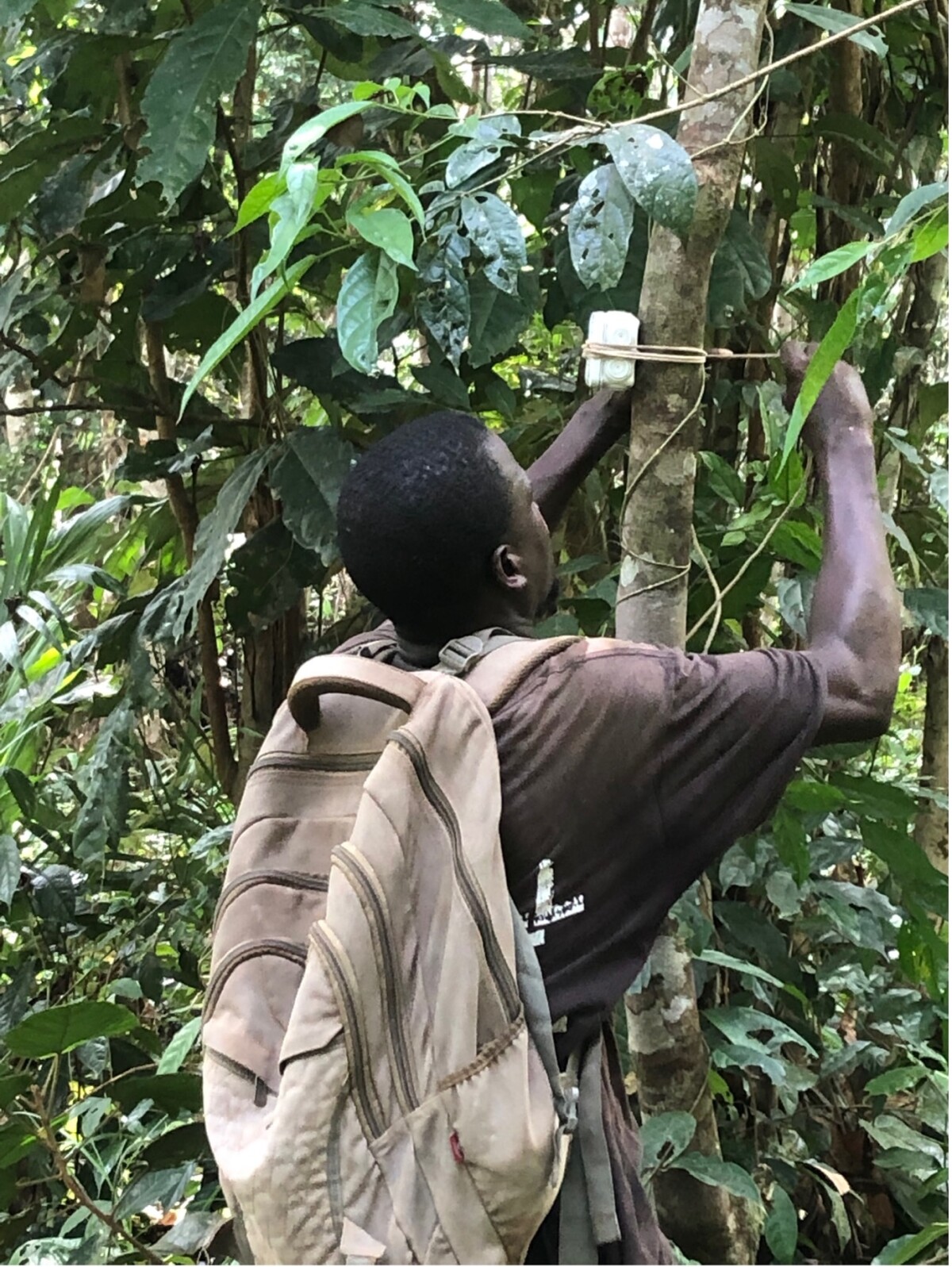
Oil palm is a cash crop and is widely grown across the tropics. Its product – palm oil – is the most widely traded vegetable oil worldwide, in part owing to oil palm’s high productivity (in comparison to other vegetable oil crops like sunflower and oilseed rape, farmers can get 4-10 times as much oil per hectare from oil palm). Therefore, oil palm cultivation is incredibly important to global food security, and it’s critical to the livelihoods of millions of people, many of whom live in low-income or lower-middle-income economies.
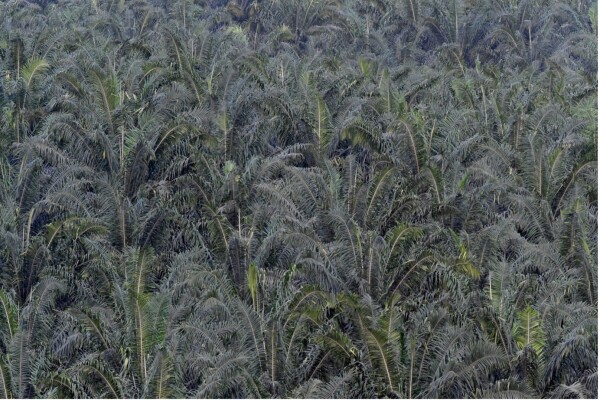 Figure 1. An industrial oil palm plantation in Southeast Liberia (PC: Jonathan Timperley). In this cultivation style, oil palm is grown as a monoculture and with high chemical input including pesticides, fertilisers, and herbicides to help the crop grow.
Figure 1. An industrial oil palm plantation in Southeast Liberia (PC: Jonathan Timperley). In this cultivation style, oil palm is grown as a monoculture and with high chemical input including pesticides, fertilisers, and herbicides to help the crop grow.
Most palm oil today is produced in Southeast Asia. Chances are, if you look at a product on your kitchen shelf with palm oil, the oil within will be from a farm in Malaysia or Indonesia. Indeed, about 80% of the global palm oil supply comes from these countries. Expansion of cultivation in these countries has often come at the expense of native habitat. Over the last 40 years, millions of hectares of rainforest, peatland, and other habitat in Southeast Asia have been turned into oil palm plantations. This has caused widespread impacts on biodiversity and levels of ecosystem functioning (i.e., the functions that species in our ecosystems contribute, such as pollination), and also society (e.g., turning communities from subsistence-based to market-based economies).
Our project – which is supported by a Cambridge-Africa ALBORADA award – explores how oil palm cultivation affects rainforest systems. However, unlike most oil palm-based research, we work in West Africa. This might not seem strange at first glance but – for oil palm research – working in West Africa is quite unusual. Most people study oil palm in Southeast Asia and, to a lesser extent, South America. Yet, West and Central Africa is oil palm’s native home, where much of the initial research on oil palm started (e.g., Côte d’Ivoire and Nigeria were hotspots of oil palm research in the mid-1900s) and are major loci of oil palm expansion today.
Specifically, we work in Southeast Liberia. Here, oil palm is cultivated primarily in two ways. First, oil palm is cultivated in a traditional style, involving local communities practicing slash-and-burn agriculture in areas with wild-growing palms, which grow naturally in low-lying forested areas (Figure 2). Secondly, oil palm is cultivated in an industrial style, involving large-scale corporations growing oil palm as a monoculture across vast areas of land. Both methods of oil palm cultivation support the livelihoods of local communities and also both come at the expense of native rainforest habitat.
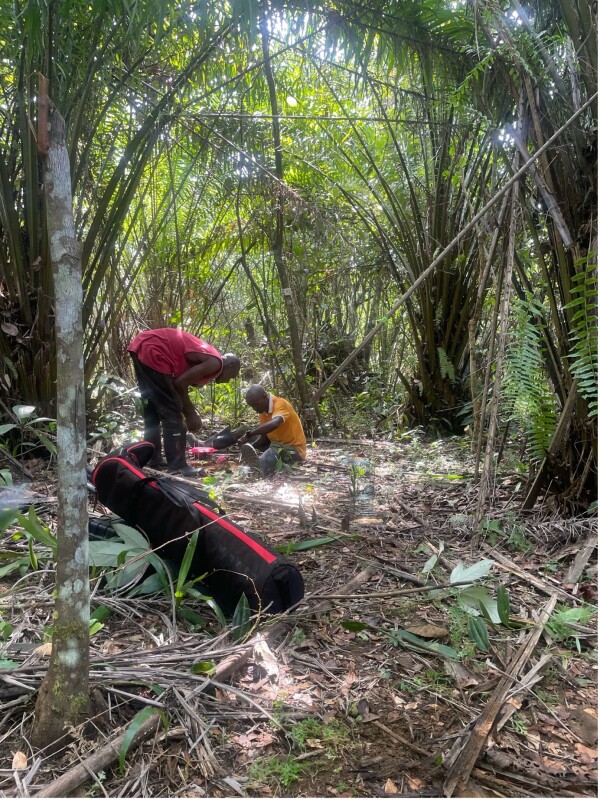 Figure 2. Example of oil palm being grown in a traditional style, as practised by local communities in Southeast Liberia. This area of land was a farm about 4 years ago. Local people still return to the area to harvest the fruits from the wild-growing oil palms.
Figure 2. Example of oil palm being grown in a traditional style, as practised by local communities in Southeast Liberia. This area of land was a farm about 4 years ago. Local people still return to the area to harvest the fruits from the wild-growing oil palms.
In our work – which is a joint venture between University of Cambridge, University of Liberia, and Golden Veroleum Liberia (a major oil palm company) and supported by the Forestry Development Authority of the Government of Liberia and international academic partners – we investigate the ecological changes caused by oil palm cultivation in Liberia. Over the last two years, we have established a network of monitoring plots in Southeast Liberia that is located in the rainforest, community agriculture with wild-growing palms (called ‘country palm’), and industrial oil palm plantation. Working with local communities, we have sampled a variety of ecological conditions across our monitoring plots, including abiotic conditions like temperature and vegetation complexity; the biodiversity of the major species groups including plants, insects, and ground-dwelling mammals; and levels of ecosystem functioning such as resource removal. By comparing ecological conditions across plots, we aim to identify particularly sensitive parts of the ecosystem that are affected by oil palm cultivation, paving the way for future interventions that can help to offset any impacts while ensuring that oil palm productivity is maintained or possibly even increased by enhancing the biodiversity of species – like pollinators – that help oil palm to grow.
We have used our Cambridge-Africa ALBORADA award to build closer ties between the University of Cambridge and University of Liberia. In particular, we were able to expand our existing ecological surveys to include the biodiversity of birds and bats – two incredibly functionally and culturally important animal groups – and understand how landscape-scale factors (such as the presence of non-oil palm habitat within plantations) affects bird and bat biodiversity. These surveys were led by a University of Liberia student, who already had expertise in bird sampling and received additional training in bat sampling (Figure 3). Preliminary findings indicate that oil palm cultivation causes a change in bird and bat communities, with some species benefitting from cultivation and others being negatively affected (particularly forest specialists). Effectively, our work has allowed us to identify species that “win” or “lose” when rainforest is turned into oil palm. Now, we can use existing information on the ecology of these species to understand why they are affected in particular ways, for instance, some species may benefit from oil palm because they feed on the fruits.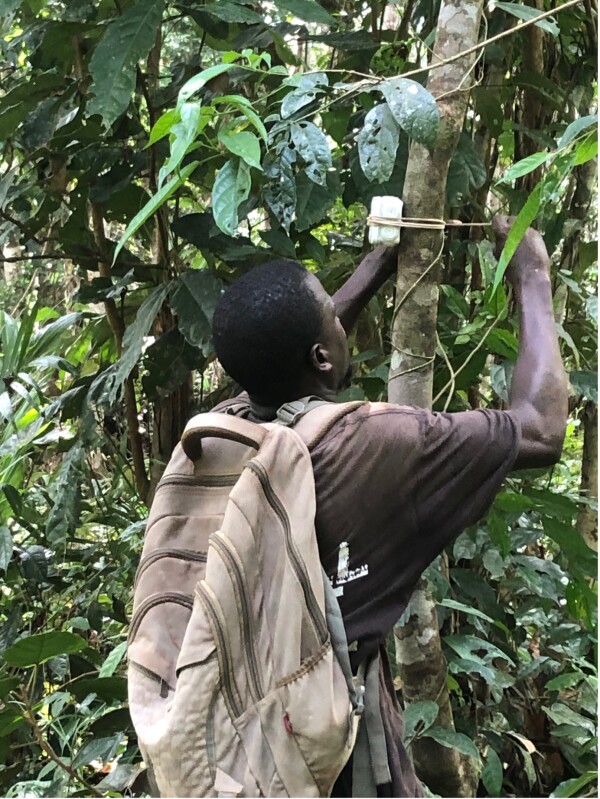 Figure 3. Mr Andrew N. Gweh, from the University of Liberia, led bird and bat biodiversity surveys. Here, Andrew is setting-up an Audiomoth, which is a bioacoustic recording device that records vocalising animals. Using specialised software, we can quantify the activity of bird and bat species from the Audiomoth recordings.
Figure 3. Mr Andrew N. Gweh, from the University of Liberia, led bird and bat biodiversity surveys. Here, Andrew is setting-up an Audiomoth, which is a bioacoustic recording device that records vocalising animals. Using specialised software, we can quantify the activity of bird and bat species from the Audiomoth recordings.
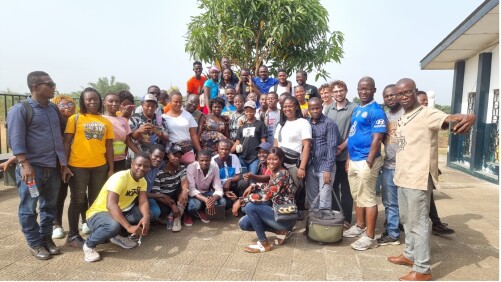 As part of our Cambridge-Africa ALBORADA award, we also hosted a two-day biodiversity monitoring workshop at the University of Liberia in February 2023. During the workshop, we showcased different methods of monitoring biodiversity, including using camera traps to monitor ground-dwelling mammals and birds, net-based methods to capture butterflies, and pitfall traps to assess the biodiversity of ground-dwelling insects. Our workshop was attended by more than 40 University of Liberia students and staff, and equipment purchased for the workshop will now be used by University of Liberia to support student research projects moving forwards (Figure 4).
As part of our Cambridge-Africa ALBORADA award, we also hosted a two-day biodiversity monitoring workshop at the University of Liberia in February 2023. During the workshop, we showcased different methods of monitoring biodiversity, including using camera traps to monitor ground-dwelling mammals and birds, net-based methods to capture butterflies, and pitfall traps to assess the biodiversity of ground-dwelling insects. Our workshop was attended by more than 40 University of Liberia students and staff, and equipment purchased for the workshop will now be used by University of Liberia to support student research projects moving forwards (Figure 4).
Figure 4. Course photo at our biodiversity monitoring workshop at the University of Liberia. The workshop focussed on monitoring the biodiversity of birds, bats, ground-dwelling and flying insects, and ground-dwelling mammals.
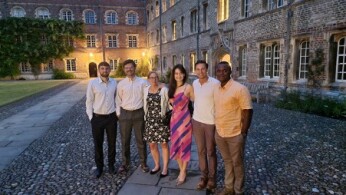 We have additionally used our award to support co-investigator Dr Freeman to visit the University of Cambridge on a knowledge exchange visit. During this trip, we hosted a workshop in Cambridge to improve relationships between UK-based persons working on conservation initiatives in Liberia. The workshop was attended by researchers, NGOs, and staff from Cambridge-Africa, and featured lightening talks to showcase the diversity of research projects that are ongoing in Liberia with connections to the UK. Already, the workshop is seeding applications for future collaborative research projects with the University of Liberia.
We have additionally used our award to support co-investigator Dr Freeman to visit the University of Cambridge on a knowledge exchange visit. During this trip, we hosted a workshop in Cambridge to improve relationships between UK-based persons working on conservation initiatives in Liberia. The workshop was attended by researchers, NGOs, and staff from Cambridge-Africa, and featured lightening talks to showcase the diversity of research projects that are ongoing in Liberia with connections to the UK. Already, the workshop is seeding applications for future collaborative research projects with the University of Liberia.
Figure 5. As part of the knowledge exchange visit, we attended a formal dinner with collaborators at Jesus College, Cambridge, to discuss future research initiatives.
We believe that our activities over the last year are only the start of long-term collaboration between University of Cambridge and University of Liberia researchers. We are now applying for follow-up funding to support additional research collaborations, and seed new research projects that extend beyond our current research programme. We are very appreciative to the Cambridge-Africa ALBORADA award programme for supporting our research.
By Michael Pashkevich and Ben Freeman

